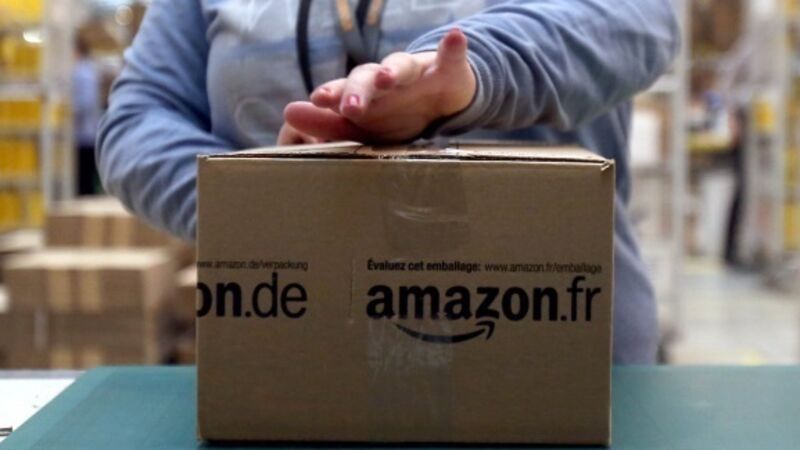How to tell the real from fake reviews for goods online

A flood of bogus reviews on Amazon was recently uncovered by Which? magazine. offers tips on avoiding buying shoddy goods.
Beware the fake review. A recent study from UK consumer watchdog Which? discovered a number of electronic devices for sale on Amazon.co.uk which boasted high numbers of exceptionally favourable reviews. In testing however, all were found to be seriously wanting.
The tested products were made by little known Chinese brands, yet despite this, all were accompanied by hundreds of five star reviews. Some even carried the ‘Amazon’s Choice’ endorsement, which is supposed to be reserved for only the very best products. Of the eight products tested, three performed so badly that they were rated ‘Don’t Buy’ by Which?
A pair of Yineme headphones had more than 800 reviews, an average rating of 4.4 out of 5 and carried the Amazon’s Choice seal of approval. But in test conditions, Which? said that their noise-cancelling properties were worthless, and scored them at 37%.
When Which? reported these findings to Amazon, the product disappeared from the site, taking its 800 questionable reviews with it.
Then there’s the Onson Cordless Vacuum, which also scored an average rating of 4.4, and also bore the Amazon’s Choice badge. Which? found it difficult to use and gave it a single star for cleaning carpets and floorboards. Its overall score came in at 32% - one of the lowest ever ratings for a vacuum cleaner.
Fake reviews are a big problem. Another Which? survey from last year found that 97% of shoppers rely on customer reviews to inform their purchases. The Competition and Markets Authority estimates that £23 billion (€26.6 billion) of UK consumer spending power is influenced by online reviews.
The big question then is how to tell the real from the fake. Which? says that the red flags they spotted included unusually high numbers of positive reviews, high review frequency, telltale repetition of phrases, and photos and videos uploaded alongside the reviews themselves.
ECC Ireland has plenty of excellent information on its site, eccireland.ie, all designed to help you to recognise the bogus review when you see it.
First of all, don’t rely on star ratings alone. Look at the comments about the product and ask yourself the following questions: Is the reviewer being over the top about the product? Is the review too long or too short? Does it include specifics about the product? Does it repeat similar information and phrases?
In the same vein, watch out for suspicious language. If it reads like an infomercial, it’s probably fake.
For example: ‘These £2 sunglasses are the best thing in the world. They’ve changed my life. I can stare directly at the sun for hours.’
Or ‘Once I bought this snake oil for €170, I felt like a new person. My hair grew 5cm overnight and I instantly dropped 10kg.’
Look out too for reviews written all in capitals, with odd formatting or no punctuation.
Huge numbers of five star reviews are also a sign that something’s not right. Always check the dates. If a lot of the reviews were posted at the same time, the seller might have done a big drive on Facebook groups or other platforms to drum up feedback.
And check the reviewer’s other reviews. If they’ve reviewed lots of other products, it’s likely their praise has been bought. Similarly, if they’ve given everything they’ve ever bought five stars, they’re probably not reliable. And if they’ve bought the same thing a number of times, this could mean they’re a member of a review group and not the helpful consumer they’re pretending to be.
Three or four star reviews are worth paying attention to, as they’re more likely to be honest than those at the extreme end of the spectrum. And look out for patterns. If a seller gets a bad review then a flurry of positive reviews, it’s likely they’re trying to bury the bad one and bring their average score back up.
Having said that, it’s not unheard of for competitors to write scathing, one star reviews on another’s product to drag their average scores down.
If the reviewer hasn’t bought the book or used the product, listen to those alarm bells. Most people would wait to try something before recommending it or dissuading other people from buying it too.
Verified reviews are ones the site can confirm were bought through their site. Non-verified reviews mean the site can’t confirm where they bought that product, what price they paid for it or even if they bought it at all. On most marketplaces, ‘verified purchase’ or something similar will appear next to the reviewer’s name.
Which? says that headphones are a particular problem on Amazon. In an analysis last April, it took the watchdog two hours to unearth more than 10,000 reviews from unverified purchasers on just 24 pairs of headphones. Many were five-star and arrived onsite on the same day.
Which? reports, “We also uncovered a high number of compact cameras, dash cams, fitness trackers and smartwatches from unknown brands, with perfect five-star ratings and a number of unverified reviews – many of which showed the same suspicious activity.”
While Amazon is coming under the spotlight at the moment, the fake review problem is not restricted to the trading giant. Far from it. Two months ago, Which? analysed almost 250,000 TripAdvisor reviews for the ten top-ranked hotels in ten popular tourist destinations around the world. They found that no fewer than one in seven had ‘blatant hallmarks’ of fake reviews.
The watchdog says that they reported fifteen cases of fake reviews to TripAdvisor, and said that the site admitted that fourteen of the hotels had already been caught posting fake reviews in the previous year. TripAdvisor said that they had penalised six hotels for breaking review guidelines, and that two had been given a ‘red badge’ warning for suspicious review activity. Had this been made clear to consumers? No, it had not.
If you’re still not sure if the review is real or not, there are a number of online tools which can help to establish its bona fides. One is Fakespot and the other is ReviewMeta. Both allow you to copy and paste a product’s URL into the site. They then analyse the reviews for telltale signs of fakery.
If you spot a review which you think is fake, you should be able to report it to the marketplace. If you think you were mislead when you bought from a retailer online, you are entitled to cancel and return the order. You can exercise your right to cancel at any time from the moment you place the order, and up to fourteen days after taking ownership of the goods.
You then have a further fourteen days from the date you notified the seller of your intention to cancel to return the goods.
















